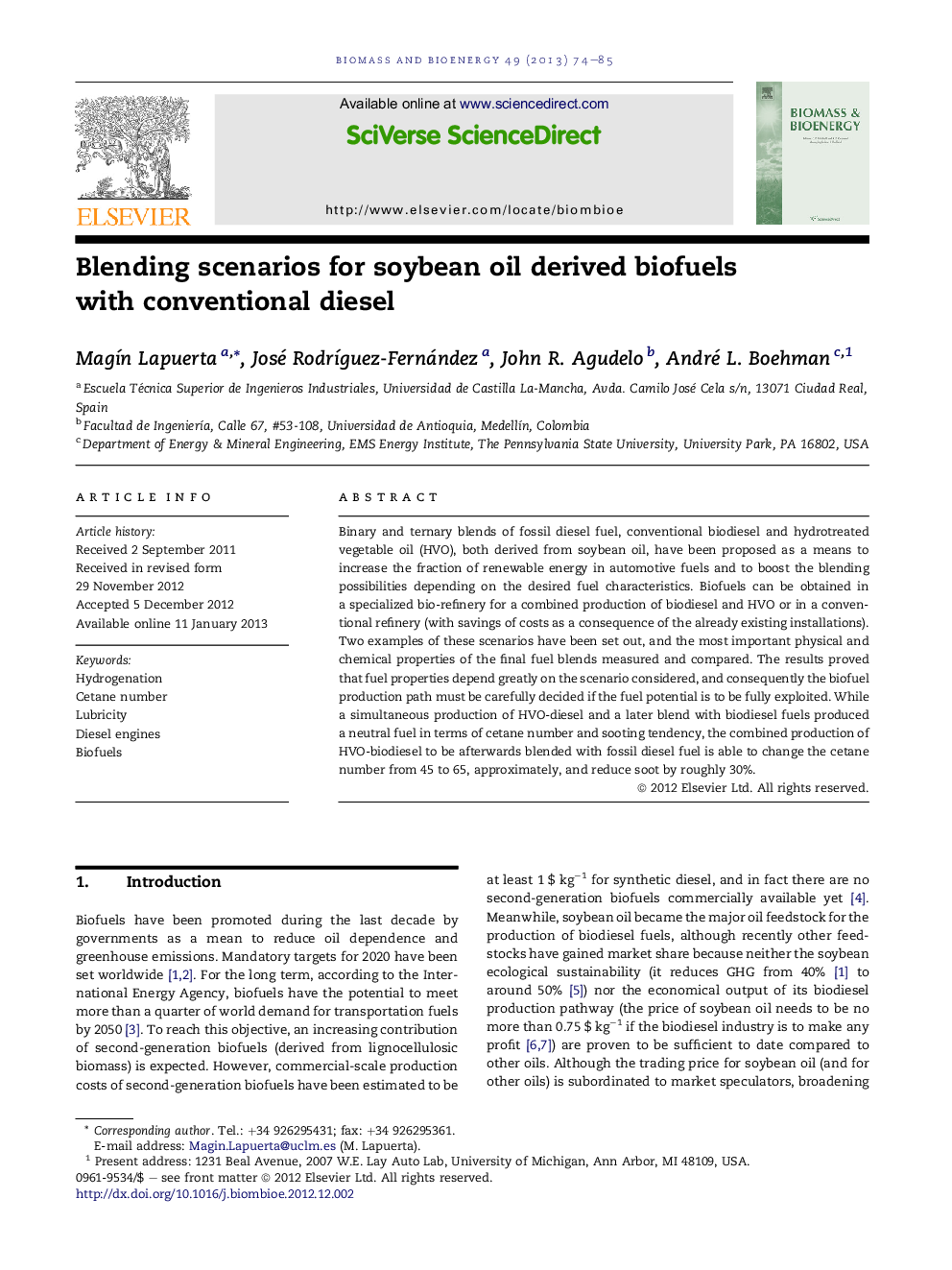| Article ID | Journal | Published Year | Pages | File Type |
|---|---|---|---|---|
| 677225 | Biomass and Bioenergy | 2013 | 12 Pages |
Binary and ternary blends of fossil diesel fuel, conventional biodiesel and hydrotreated vegetable oil (HVO), both derived from soybean oil, have been proposed as a means to increase the fraction of renewable energy in automotive fuels and to boost the blending possibilities depending on the desired fuel characteristics. Biofuels can be obtained in a specialized bio-refinery for a combined production of biodiesel and HVO or in a conventional refinery (with savings of costs as a consequence of the already existing installations). Two examples of these scenarios have been set out, and the most important physical and chemical properties of the final fuel blends measured and compared. The results proved that fuel properties depend greatly on the scenario considered, and consequently the biofuel production path must be carefully decided if the fuel potential is to be fully exploited. While a simultaneous production of HVO-diesel and a later blend with biodiesel fuels produced a neutral fuel in terms of cetane number and sooting tendency, the combined production of HVO-biodiesel to be afterwards blended with fossil diesel fuel is able to change the cetane number from 45 to 65, approximately, and reduce soot by roughly 30%.
► Two soybean-oil derived diesel fuels and blends with regular diesel were analysed. ► Two market scenarios based on refineries and biorefineries were explored. ► Part of the blending ranges would require engine recalibration. ► Part of the blending ranges would not exploit the emissions reduction potential. ► Some ranges would be inacceptable in cold weather or lead to out-of-spec fuels.
